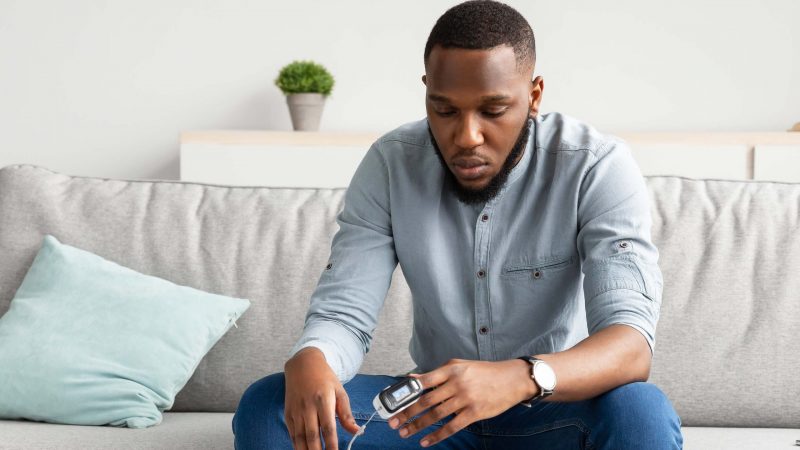The challenge
- In early 2020, a crisis was emerging in the NHS with the onset of the COVID-19 pandemic.
- One of the early breakthroughs in the treatment of COVID-19 was the identification of silent hypoxia – the presence of low blood oxygen levels in a patient who might not otherwise seem unwell – as a symptom that needs to be closely monitored and given urgent medical attention if required.
- The NHS recommended the rapid roll-out of the COVID Oximetry@Home (CO@H) pathway to help clinicians identify early signs of deterioration and intervene to improve patient outcomes.
Solution
- The Inhealthcare CO@H remote monitoring digital platform allows patients with confirmed or suspected COVID-19 to be monitored and looked after safely at home by allowing health professionals to track their vital signs and act on any changes to their condition.
- In mid-December 2020, Inhealthcare worked with Wessex AHSN to develop and rollout one of the first fully digitally-enabled COVID Oximetry@Home (CO@H) services. The service was rolled out from the middle of January 2021 across all parts of Hampshire and the Isle of Wight to patients in primary and community care settings.
- It was subsequently rolled out across Buckinghamshire, Oxfordshire and Berkshire West (BOB), Dorset, Surrey Heartlands Health and Care Partnership, Sussex Health and Care Partnership, Bedfordshire, Luton and Milton Keynes CCG, and across Bristol, North Somerset and South Gloucestershire.
- Inhealthcare was also procured to work with NHS National Services Scotland NSS at the start of the pandemic to launch a COVID-19 Remote Health Pathway (RHP).
- The COVID Oximetry at Home (CO@H) service is one of the best examples of the power of collaboration and demonstrates how patient care can be transformed in a short space of time, without compromising safety, with team work and targeted funding.
How does the service work?
- The O@H service links directly to NHS Spine, simplifying registration for NHS staff.
- The patient uses a pulse oximeter to monitor their oxygen saturation levels. These readings, alongside other vital sign readings, including oxygen levels, pulse rate and temperature, are reported to their healthcare team on a regular basis.
- Patients have a choice of communication channels and submit their readings via a link sent by email, SMS text message or automated telephone call. Staff can also input readings manually if patients would prefer to speak with another person on the telephone, making the service fully digitally inclusive.
- Inhealthcare sends patient data to clinical systems to enable clinicians to view readings on a web-based dashboard. Alerts are created if thresholds are breached to enable clinicians to see who might need intervention, supervision or support or who has not submitted their reports. Patients are prompted for readings at regular intervals.
- An individual’s readings integrate with the GP record including SystmOne and EMIS Web using SNOMED codes, showing changes in their health and the amount of time spent on the virtual ward, and enabling the patient’s records to be automatically updated.
- Secondary care electronic patient record systems are also updated where applicable.
- Inhealthcare supplies regular data reports for clinicians, illustrating the number of patients on the service and their progress through the pathway.
Benefits
- Creates better clinical alert systems, helping to identify when a patient may be deteriorating and to prioritise patients who need urgent treatment.
- Enables vital patient level data to be seen across all settings, including ambulance services, hospitals and CO@H teams, making it easier and quicker for health care teams and services to work together.
- Enhances the safety and speed of the service by ensuring healthcare professionals are able to access relevant information quickly and effectively.
- Supports better decision-making for workflow and capacity management across primary and urgent care.
- Improves patient experience:
- Empowerment: patients can enter their own data and better understand and manage their condition.
- Reassurance: patients know they’re being monitored on an on-going basis.
- Choice: patients have choice and control over how they enter their readings.
- Convenience: patients can monitor their condition at home rather than in a clinical setting.
Outcomes
- More than 25,000 people have benefited from the Inhealthcare Oximetry@Home service.
- Research shared by Dr Matt Inada-Kim, national clinical director for deterioration at NHSE, shows:
- Hospital length of stay was reduced by an average of 6.3 days for CO@H patients in comparison to non-CO@H patients.
- Only 3.6% of CO@H patients were admitted to ICU compared with 8.2% for non-CO@H, and 5.8% of CO@H patients died within 30 days compared to 20.5% of non-CO@H patients

